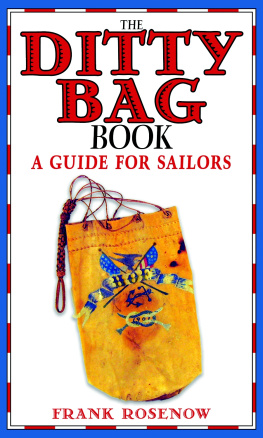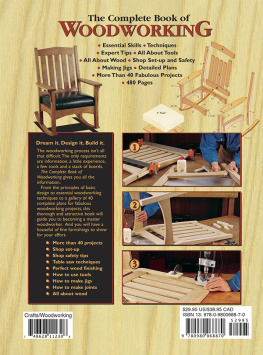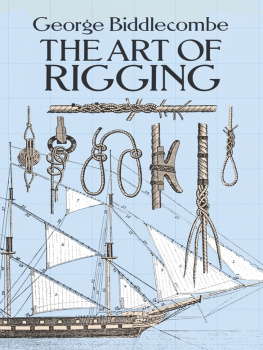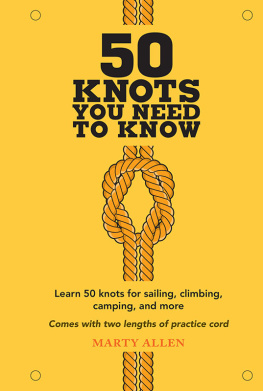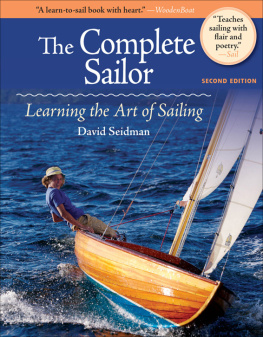
Copyright 2016 by McGraw-Hill Education. All rights reserved. Except as permitted under the United States Copyright Act of 1976, no part of this publication may be reproduced or distributed in any form or by any means, or stored in a database or retrieval system, without the prior written permission of the publisher.
ISBN: 978-0-07-184977-7
MHID: 0-07-184977-7.
The material in this eBook also appears in the print version of this title: ISBN: 978-0-07-184978-4,
MHID: 0-07-184978-5.
eBook conversion by codeMantra
Version 1.0
All trademarks are trademarks of their respective owners. Rather than put a trademark symbol after every occurrence of a trademarked name, we use names in an editorial fashion only, and to the benefit of the trademark owner, with no intention of infringement of the trademark. Where such designations appear in this book, they have been printed with initial caps.
McGraw-Hill Education eBooks are available at special quantity discounts to use as premiums and sales promotions or for use in corporate training programs. To contact a representative, please visit the Contact Us page at www.mhprofessional.com.
TERMS OF USE
This is a copyrighted work and McGraw-Hill Education and its licensors reserve all rights in and to the work. Use of this work is subject to these terms. Except as permitted under the Copyright Act of 1976 and the right to store and retrieve one copy of the work, you may not decompile, disassemble, reverse engineer, reproduce, modify, create derivative works based upon, transmit, distribute, disseminate, sell, publish or sublicense the work or any part of it without McGraw-Hill Educations prior consent. You may use the work for your own noncommercial and personal use; any other use of the work is strictly prohibited. Your right to use the work may be terminated if you fail to comply with these terms.
THE WORK IS PROVIDED AS IS. McGRAW-HILL EDUCATION AND ITS LICENSORS MAKE NO GUARANTEES OR WARRANTIES AS TO THE ACCURACY, ADEQUACY OR COMPLETENESS OF OR RESULTS TO BE OBTAINED FROM USING THE WORK, INCLUDING ANY INFORMATION THAT CAN BE ACCESSED THROUGH THE WORK VIA HYPERLINK OR OTHERWISE, AND EXPRESSLY DISCLAIM ANY WARRANTY, EXPRESS OR IMPLIED, INCLUDING BUT NOT LIMITED TO IMPLIED WARRANTIES OF MERCHANTABILITY OR FITNESS FOR A PARTICULAR PURPOSE. McGraw-Hill Education and its licensors do not warrant or guarantee that the functions contained in the work will meet your requirements or that its operation will be uninterrupted or error free. Neither McGraw-Hill Education nor its licensors shall be liable to you or anyone else for any inaccuracy, error or omission, regardless of cause, in the work or for any damages resulting therefrom. McGraw-Hill Education has no responsibility for the content of any information accessed through the work. Under no circumstances shall McGraw-Hill Education and/or its licensors be liable for any indirect, incidental, special, punitive, consequential or similar damages that result from the use of or inability to use the work, even if any of them has been advised of the possibility of such damages. This limitation of liability shall apply to any claim or cause whatsoever whether such claim or cause arises in contract, tort or otherwise.
This book is dedicatedto the memory of Nick Benton, Master Rigger
Contents
by Larry Pardey
by Peter H. Spectre
by Des Pawson
Preface
30 years ago, with an old cable spool as a chair, and my workbench as a desk, I began to write the first version of this book. I wrote longhand, on a yellow legal tablet, slowly filling page after page with what I hoped and meant would become a primer on sailing vessel rigging. I wrote as much to refine and clarify my own meager understanding of the subject as to inform anyone else; even then I had an inkling of the vast scale of what there was to know about rigging, and how incomplete my own comprehension was. But I was also filled with an evangelical zeal. I wanted the world to know about this beautiful art.
In the years since, I have worked on hundreds (thousands?) of rigs. On some days, I seem to have acquired some level of competence. On other days, the learning curve is unbearably steep. On those days, to paraphrase Clifford Ashley, I feel that if I can just keep improving at this rate, and if my health holds out, I might someday manage to get a grasp of the fundamentals. Therefore, gentle reader, consider this new edition to be a work in progress. It is certainly an improvement on the previous editionalmost every page of my copy is marked with red inkand in addition to corrections and evolutions you will find new ways of thinking about and working with rigging.
Some general bits of advice:
CROSS-POLLINATE
In the course of my career it has been my privilege to work with theater riggers, industrial riggers, arborists, timber framers, circus riggers, mountain climbers, etc., in addition to riggers of all types of sailing vessels. The particulars of each branch of the art vary widely, and not all of the insights in one field are applicable in another, but we all have a lot to learn from one another.
DO THE MATH
Many of my clients have been engineers or architects, and they have been unfailingly generous and patient in expanding my understanding of the design aspects of the art. Rueful admission: when I was in high school, there was only one class about which I said, Ill never use this crap. That class was trigonometry. It turns out that you cannot be a competent rigger without some understanding of trigonometry.
TRUST/VERIFY
Whether you get your information from a professional, or someone down the dock, or YouTube, be sure of its validity before you put it into practice. Math can be a big help here, but so can discussion, direct experiment, and common sense. This advice (I pause here to wince) goes for some of the recommendations found in previous editions of this book. The current one as well, for all I know. You can be wrong about things you sincerely believe in. It is overwhelmingly likely that you are wrong about many things, right now. This can have a paralyzing effect, partly because it can be embarrassing, but mostly because, in rigging, peoples lives are at stake; your beliefs translate directly to safety. Or not. Thats why we have civilization, which at its best functions as a non-genetic means of preserving and transmitting aids to survival. Test results, engineering standards, theories, and algorithms are the left-brain means to this end. But dont underestimate the power of story, of anecdote. For instance: some electricians were rewiring a house. Their client, observing their work, saw that they were, um, selectively disregarding certain portions of the electrical code, specifically those sections that the city inspector was unlikely to check. When the client called them on this, the job boss said, Come on, when was the last time you heard about someone being electrocuted by their house? He just didnt understand that every line of that code was written in blood, that the reason that our houses are unlikely to electrocute us is that we have made formal note of things that have killed people, and seek to avoid them, with a further subtext being that the logic behind every line of construction code is not always immediately apparent to the casual observer.
Attend, then, to standards, to tradition. And do your best to work out the reasons behind the standards, to keep them alive, and to make them easier to pass on effectively. Which brings us to:
TEACH
I have traded in my legal pad for a laptop, but I still want to keep this gift moving. Teaching is a way to express a basic human need: helping to take care of others. Some people teach as a way of showing off, others because they actually cant do anything else, but the best teaching is an
Next page

